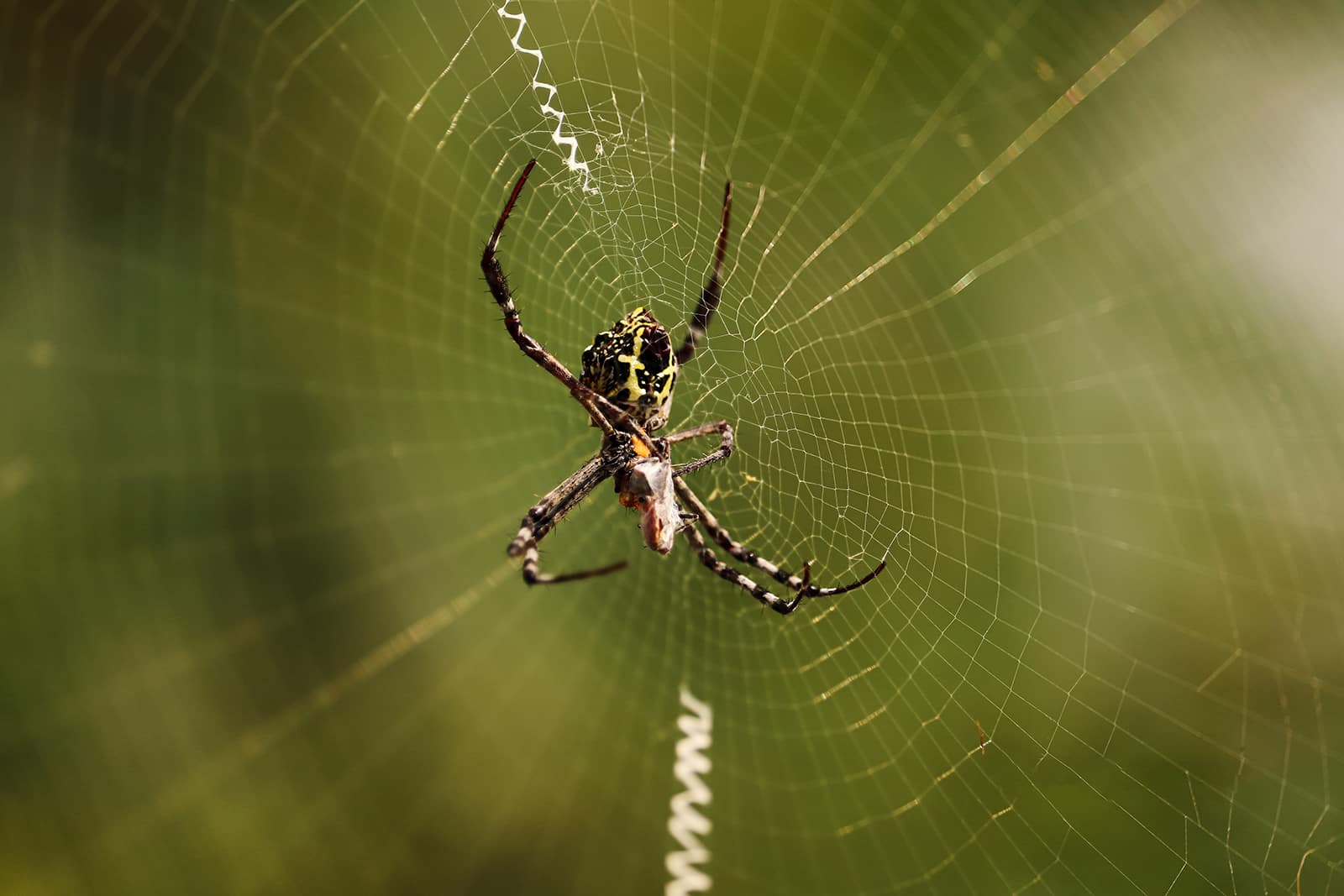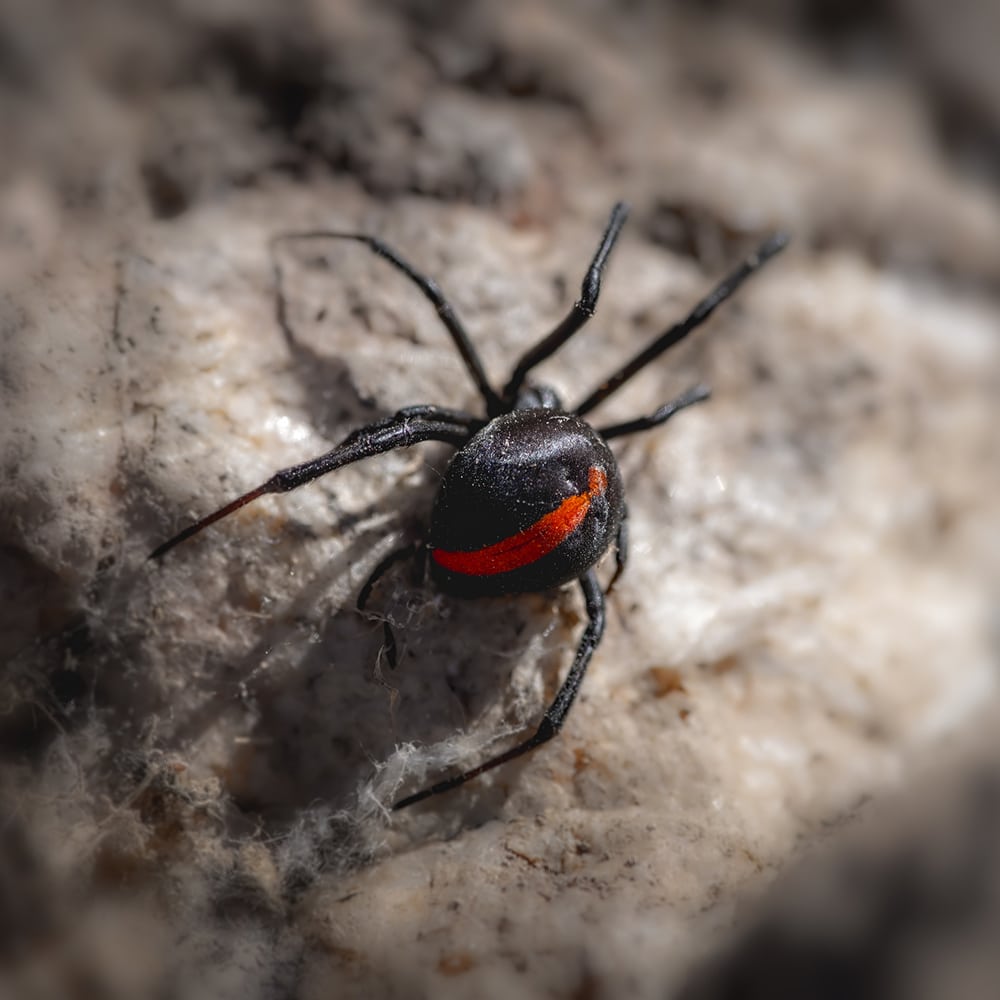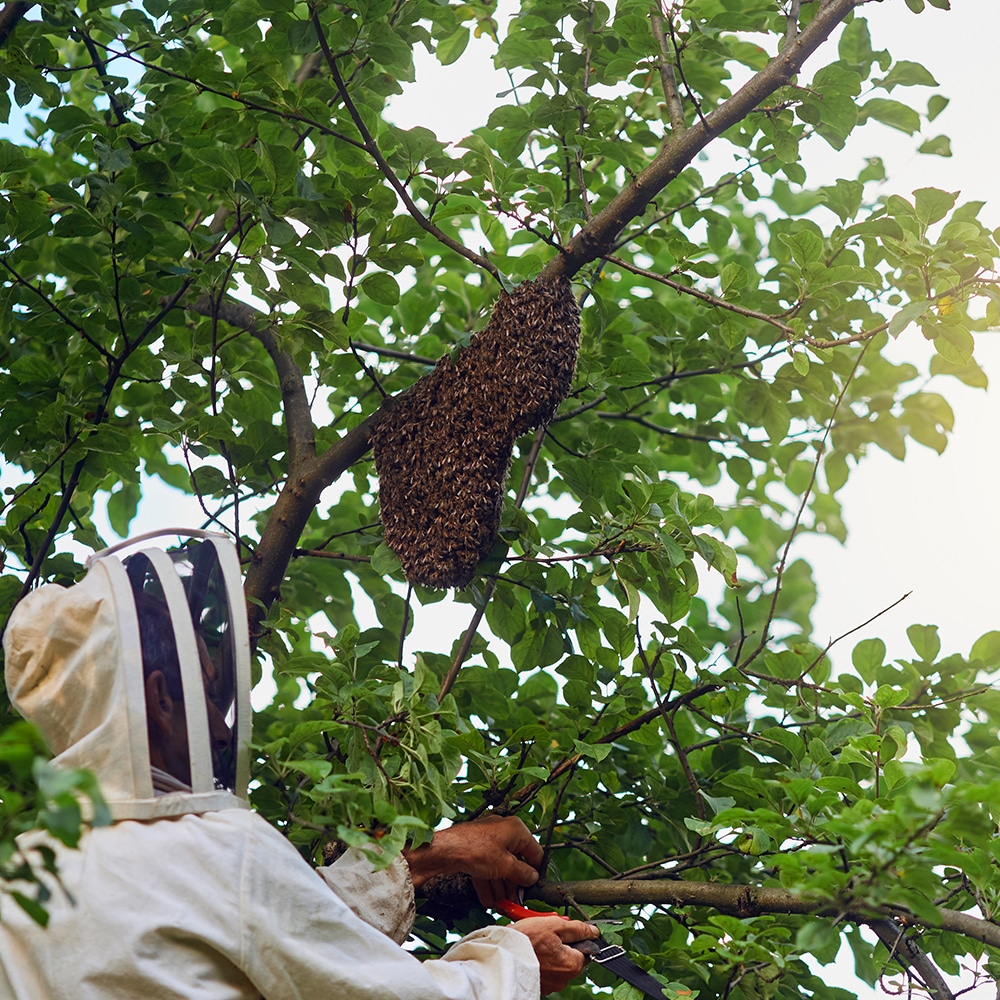
Why Do Spiders Come Back And Why
Why Do Spiders Come Back And Why On The Central Coast NSW. Responsive Proactive Solutions. Detail-focused for lasting results. Call Adam on 0431 222 894
Are you wondering how to get rid of spiders in your home? You’re not alone! Spiders often sneak into homes, especially in Central Coast NSW. At Vital Pest Control, we know exactly how to tackle this issue.
Why do spiders enter homes?
Spiders seek shelter and food indoors. They enter through small cracks or open windows. The Central Coast’s climate also attracts them.
Common spider species found in houses
In Central Coast NSW, you might encounter huntsman, black house, or redback spiders. Knowing them helps in managing infestations.
How to identify a spider infestation
Frequent sightings or webs in corners signal an infestation. Spiders often hide in dark, undisturbed areas.
Signs of venomous spiders in your home
Venomous spiders like the redback have distinctive markings. Seek professional help if you spot these in your home.
Best ways to remove spider webs
Use a broom or vacuum to clear webs. Regular cleaning deters spiders from returning.
How to stop spiders from coming indoors
Seal gaps in windows and doors. Install fly screens to keep spiders out effectively.
Are spider sprays effective?
Spider sprays offer temporary relief. For a long-term solution, consider professional pest control services.
Natural spider repellents that work
Essential oils like peppermint and eucalyptus are natural repellents. Spritz them around entry points to deter spiders.
Get rid of spiders in your home with the help of Vital Pest Control. Discover how we can help you today!

Spiders often wander into homes on the Central Coast in search of suitable shelter and food. With changing weather, these arachnids seek refuge indoors, where conditions are more stable. Understanding why spiders enter homes can help in planning effective pest control strategies.
Seeking Food Sources
Spiders venture inside homes in pursuit of food. They follow the trail of insects that are attracted to light or warmth. A house with an abundance of insects provides a perfect hunting ground. Managing insect populations can reduce the attraction for spiders.
Shelter from Weather
During extreme weather, spiders look for a safe haven. Homes offer protection from heavy rain, wind, and temperature fluctuations. Areas like basements, garages, and ceiling corners become prime spots. Sealing entry points can prevent spiders from taking shelter.
Breeding and Nesting
Spiders seek quiet, undisturbed areas to lay eggs. Cluttered spaces and unused rooms often become nesting sites. Regular cleaning and decluttering can deter spiders from settling in. Keeping these spaces tidy helps in reducing spider populations.
Exploration and Wandering
Spiders are natural wanderers. They explore new territories in search of mates or better habitats. Even small gaps around windows or doors can invite them in. Regular maintenance of seals and screens can limit their entry. Implementing these measures aids in effective pest control.
Spiders often find their way into homes on the Central Coast, NSW, seeking shelter and food. While most are harmless, their presence can be unsettling. Understanding the common spider species that invade homes can help in managing them effectively. Being aware of these species is crucial for effective pest control and peace of mind.
Common House Spider
The common house spider is one of the most frequently encountered. These spiders weave messy webs in corners and crevices, waiting for unsuspecting insects to become their next meal. Although their webs may be a nuisance, these spiders pose little threat to humans. Regular cleaning and sealing entry points can keep their numbers in check.
Black House Spider
Black house spiders prefer dark, sheltered areas such as window frames or under eaves. Their webs are often dense and funnel-shaped. While bites from black house spiders can cause mild discomfort, they are not considered dangerous. Ensuring your home is well-sealed and free of debris can deter these spiders.
Huntsman Spider
Known for their large size, huntsman spiders can be startling to encounter. They usually reside under furniture or behind curtains. Despite their intimidating appearance, huntsman spiders are not aggressive and rarely bite. Regularly checking and cleaning hidden areas can help manage their presence indoors.
Daddy Long Legs
Daddy long legs are thin, delicate spiders often seen in damp, dark areas like basements or bathrooms. They are harmless to humans and can actually help control other insect populations. Simple measures such as reducing moisture and maintaining cleanliness can prevent their proliferation.
Spotting a spider infestation early can save you a lot of hassle and discomfort. On the Central Coast, where the climate is ideal for spiders, knowing the signs of an infestation is crucial. Whether it’s the presence of webs or an increase in spider sightings, identifying these issues promptly helps in dealing with them effectively.
Increase in Spider Webs
One of the first signs of a spider infestation is an increase in spider webs. These webs can appear in corners, ceilings, and around windows. They vary in size and shape, sometimes appearing messy and irregular. Regularly inspect these areas, particularly in less frequented parts of your home.
Frequent Spider Sightings
Seeing more spiders than usual might indicate an infestation. If you notice spiders lurking in different rooms or repeatedly finding them in the same areas, this could suggest a growing problem. Keep track of how often and where you see them to help identify patterns.
Egg Sacs
Egg sacs are another clear indicator of a spider issue. These small, silk-wrapped bundles may contain hundreds of eggs. Finding them in your home suggests spiders are breeding nearby. Look for them in hidden spots like basements and garages.
Increased Insect Activity
Spiders are natural predators of insects. If you notice a rise in other insects, it could be attracting spiders. Check outside lights and windowsills for signs of increased insect presence, as this might be drawing spiders into your home.
Spiders can be unwelcome guests in your home, especially when they are venomous. Knowing the signs of venomous spiders is crucial for maintaining a safe environment. On the Central Coast of NSW, keeping a vigilant eye can help you identify potential threats before they become a problem.
Recognising Web Patterns
Venomous spiders often create distinctive webs. Funnel-web spiders, for example, spin funnel-shaped webs that are typically found in cool, moist areas. These webs might appear in your garden, garage, or under your home. Redback spiders, on the other hand, weave messy, tangled webs close to the ground. Spotting these unique webs early can alert you to a spider’s presence.
Identifying Spider Features
Physical traits can also reveal a venomous spider. The funnel-web spider is large and dark, with a shiny appearance. Redbacks boast a striking red stripe on their back. If you notice these features, it’s best to avoid direct contact and call for professional pest control. Prompt identification can prevent unwelcome encounters.
Unusual Behaviour Patterns
Venomous spiders may act differently compared to non-venomous ones. They are often more aggressive when threatened. If you find a spider that appears more confrontational, it could be a sign of venom. Observing spider behaviour can provide clues about potential dangers lurking in your home.
Keeping your home spider-free on the Central Coast NSW is crucial for comfort and peace of mind. Spider webs can be unsightly and attract more spiders. Removing them effectively is a key step in managing spider presence in your home.
Use a Vacuum Cleaner
A vacuum cleaner is one of the easiest ways to remove spider webs. Use the hose attachment to reach high corners and tight spaces. This method not only removes the web but also any spiders or eggs within it.
Sweep with a Broom
Brooms are practical for removing webs from ceilings and walls. A broom with soft bristles is ideal to avoid damaging surfaces. Sweep gently to remove the web and its sticky residue.
Employ a Duster
A duster with an extendable handle can be useful for removing webs from hard-to-reach areas. Microfibre dusters are especially effective, capturing the web and preventing it from scattering.
Try a Stick or Pole
If you lack a vacuum or duster, a long stick can help. Wrap a cloth around the end and secure it with a rubber band. This makeshift tool effectively reaches ceilings and corners.
Use Sticky Tape
Sticky tape offers a quick fix for small webs. Simply press the tape onto the web and pull it away. This method is handy for removing webs from delicate surfaces and window sills.
Spiders creeping inside is a common issue for many homeowners on the Central Coast NSW. While most are harmless, their presence can be unsettling. Preventing spiders from entering your home is a proactive way to maintain a comfortable, pest-free environment.
Seal Entry Points
Spiders often find their way indoors through small cracks and openings. Inspect your home for potential entry points like gaps around windows and doors. Use caulk or weatherstripping to seal these areas. Regular maintenance of seals can deter not only spiders but other pests too.
Maintain a Clean Environment
A tidy home is less inviting to spiders. Regularly vacuuming and dusting helps remove webs and potential food sources like insects. Keep clutter to a minimum, particularly in dark corners and basements, as these are prime spider hiding spots.
Use Natural Repellents
Essential oils such as peppermint and eucalyptus can repel spiders. Mix a few drops with water in a spray bottle and apply around windows, doors, and corners. This natural method is not only effective but also leaves your home smelling fresh.
Reduce Outdoor Lighting
Spiders are attracted to lights that draw in insects. Minimise outdoor lighting or use yellow bulbs, which are less attractive to bugs. This simple change can reduce the number of spiders drawn to your home’s exterior.
Spider sprays are a common choice for homeowners on the Central Coast NSW seeking vital pest control solutions. These sprays target spiders directly, offering a straightforward approach to managing unwanted eight-legged visitors. But how effective are they really?
Understanding the Mechanism of Spider Sprays
Spider sprays work by delivering chemicals that disrupt a spider’s nervous system. When applied correctly, the spray can immobilise or kill spiders on contact. However, their effectiveness depends heavily on application precision. Spraying in areas where spiders commonly travel, such as corners and crevices, increases the chance of direct contact. Still, some species might be more resilient, requiring multiple treatments.
The Role of Active Ingredients
Different sprays contain various active ingredients. Pyrethroids, a common component, are synthetic chemicals that mimic natural insecticides found in chrysanthemum flowers. They target the nervous system of spiders, providing fast results. However, consistent exposure can lead to resistance in some spider populations, reducing long-term effectiveness.
Complementing Sprays with Other Control Methods
While effective for immediate results, spider sprays are best used alongside other control measures. Regular cleaning, sealing entry points, and reducing clutter can help minimise spider habitats. These additional steps not only enhance the effectiveness of spider sprays but also contribute to a more sustainable pest control strategy on the Central Coast.
Spiders often find their way into homes on the Central Coast, NSW, causing concern for many residents. While some opt for chemical solutions, natural spider repellents offer an effective and eco-friendly alternative. These methods not only help keep spiders at bay but also maintain a safe environment for families and pets.
Essential Oils
Essential oils like peppermint, tea tree, and eucalyptus are popular for repelling spiders. Their strong scent overwhelms the arachnids, driving them away. Mix a few drops of your chosen oil with water in a spray bottle and spritz around windows, doors, and corners. Regular application ensures its effectiveness, creating a barrier that spiders avoid.
Citrus Peels
Citrus peels, such as those from lemons or oranges, are another natural deterrent. Spiders dislike the smell of citrus. Place peels near entry points or rub them along sills and skirting boards. This not only repels spiders but also leaves a fresh scent in your home. Replace peels weekly to maintain their potency.
Vinegar Solution
Vinegar is a versatile household item that can also deter spiders. Mix equal parts of vinegar and water in a spray bottle and apply to areas where spiders frequent. The acetic acid in vinegar is unappealing to spiders, making it an effective deterrent. It’s a budget-friendly option that’s safe for everyday use.
Keeping spiders out of bedrooms can be a challenge, especially in the Central Coast region of NSW where these eight-legged visitors are common. With some practical steps, you can create a spider-free sanctuary in your home. Here’s how to keep spiders out of your bedroom effectively.
Seal Entry Points
Spiders often find their way into bedrooms through tiny gaps and cracks. Check your windows, doors, and walls for any openings. Use caulk or weatherstripping to seal these entry points. This not only blocks spiders but also helps keep other pests out. Regularly inspect these areas to ensure they remain sealed.
Maintain Cleanliness
A clean bedroom is less inviting to spiders. Regularly dust and vacuum corners, under beds, and around furniture. Pay attention to cluttered areas where spiders might hide. By keeping your space tidy, you reduce the chances of encountering these creatures. Cleanliness also helps eliminate other pests that attract spiders.
Utilise Natural Repellents
Natural repellents can deter spiders effectively. Essential oils like peppermint, eucalyptus, and tea tree are known for their spider-repelling properties. Mix a few drops with water in a spray bottle and spritz around windows and doors. This creates a fragrant barrier that spiders dislike.
Consider Professional Help
If spiders persist despite your efforts, consider contacting Vital Pest Control on the Central Coast NSW. Professionals can assess and treat spider issues with precision, ensuring your bedroom remains a peaceful, spider-free zone. Investing in expert help can save time and offer long-term solutions.
Spiders often find solace in dark corners of homes, especially in regions like the Central Coast of NSW. These eight-legged creatures thrive in shadowy nooks for various reasons, making it crucial to understand their behaviour when trying to manage them effectively.
Seeking Shelter and Safety
Dark corners offer spiders a haven from predators. In these secluded spots, they can spin webs or lurk quietly, waiting for prey. The lack of light also minimises their exposure to threats, allowing them to remain undisturbed. This instinctive behaviour is a natural survival tactic.
Ideal Hunting Grounds
Spiders are opportunistic hunters. Dark corners attract insects, providing a constant food source. The shadows help conceal spiders, increasing their chances of capturing unsuspecting prey. This strategic positioning ensures they maintain a steady diet without much effort.
Temperature and Humidity Preference
Spiders often prefer dark, damp environments that mimic their natural habitats. Corners in homes usually have stable temperatures and higher humidity, especially in bathrooms or basements. These conditions are more suitable for spiders to thrive, encouraging them to take up residence.
Understanding why spiders gravitate towards dark corners can aid in effective pest control strategies. Addressing these factors can help reduce their presence, ensuring a more comfortable home environment.
The Central Coast of NSW is home to various spider species, making professional spider treatments a necessity for many residents. Vital Pest Control offers effective solutions to manage these unwelcome arachnid guests. For homeowners looking to maintain a spider-free environment, understanding the available treatments can make a significant difference in safeguarding your home.
Integrated Pest Management
Integrated Pest Management (IPM) is a holistic approach that combines multiple strategies to control spider populations. This method focuses on long-term prevention by understanding spider behaviour and habitat. Vital Pest Control uses IPM to identify entry points and remove clutter where spiders thrive. This strategy reduces reliance on chemicals while effectively managing infestations.
Chemical Sprays and Dusting
Chemical treatments are a popular choice for immediate spider control. Vital Pest Control applies targeted sprays and dusting in high-risk areas like corners and crevices. These treatments disrupt the spiders’ ability to reproduce and deter them from returning. The use of professional-grade products ensures safety and effectiveness, offering peace of mind to homeowners.
Barrier Treatments
Barrier treatments create a protective shield around your home, preventing spiders from entering. Vital Pest Control applies these treatments to the exterior foundation and entry points. This proactive measure is essential for maintaining a spider-free zone, especially during peak seasons when spiders are most active. Regular maintenance of these barriers ensures ongoing protection.
Spiders can be a nuisance in homes on the Central Coast NSW, but there are effective ways to prevent them from nesting. By taking proactive measures, you can maintain a spider-free environment, ensuring peace of mind and a comfortable home.
Seal Entry Points
Spiders often enter homes through cracks and gaps in doors, windows, and walls. Inspect your home regularly for potential entry points and seal them with caulk or weather stripping. This simple step can significantly reduce the chance of spiders nesting indoors.
Reduce Clutter
Cluttered areas provide ideal nesting spots for spiders. Organise storage spaces, such as basements and garages, to minimise clutter. Use sealed containers to store items and keep floors clear. A tidy environment discourages spiders from settling in.
Maintain Cleanliness
Regular cleaning can deter spiders from nesting. Vacuum frequently, especially in corners and under furniture, to remove webs and prevent spiders from establishing themselves. Pay attention to less obvious areas where dust collects, as these can attract spiders.
Outdoor Maintenance
Managing the exterior of your home is crucial in preventing indoor spider issues. Trim shrubs and trees near the house to eliminate bridges for spiders to enter. Keep firewood and debris away from the foundation, as these can serve as hiding spots.
Many homeowners on the Central Coast of NSW notice an increase in spider sightings during certain seasons. Understanding why these arachnids appear more frequently can help in managing their presence effectively.
Seasonal Weather Changes
Spiders often emerge in greater numbers during spring and summer. Warmer temperatures and increased humidity create ideal conditions for spiders to breed and hunt. During these seasons, insects, which are a primary food source for spiders, are also more active, leading to a natural increase in spider activity.
Breeding Patterns
Spring marks the beginning of the spider breeding season. This time of year sees a surge in spider populations as they mate and lay eggs. By summer, these eggs hatch, leading to a noticeable increase in young spiders exploring new territories, which often include homes.
Seeking Shelter
In autumn, as temperatures drop, spiders seek warmer environments. Homes provide shelter from the cold, making indoor spaces more attractive. This seasonal migration indoors is why many people see more spiders during cooler months.
Understanding these patterns can aid in proactive pest control. Keeping homes free of clutter and ensuring windows and doors are sealed can help manage spider populations effectively. For more tailored advice, consulting with a pest control expert like Vital Pest Control on the Central Coast can provide effective solutions.
Clutter in homes often acts as a magnet for spiders. These eight-legged creatures seek out dark, undisturbed spaces, making cluttered areas perfect hiding spots. Understanding the connection between clutter and spiders can help you manage and reduce their presence in your home.
Spiders Love Hidden Places
Clutter provides numerous nooks and crannies where spiders feel safe. Piles of newspapers, boxes, and unused items create shadowy retreats where they can build webs or nests without disturbance. By reducing clutter, you limit the attractive hiding spots, making your home less appealing to spiders.
Increased Insect Activity
Cluttered spaces can attract other insects, providing a food source for spiders. These insects often find shelter and breeding grounds in clutter, which in turn draws spiders looking for prey. Keeping areas tidy reduces insect populations, thus cutting down spider food sources.
Harder to Clean
When clutter accumulates, cleaning becomes challenging. Dust and debris build up, creating an ideal environment for spiders to thrive. Regular cleaning and decluttering disrupt spider habitats and improve overall hygiene, making your home less inviting to these pests.
Spiders can be both a nuisance and a benefit to your home on the Central Coast, NSW. While they help control other pests, their presence can be unsettling. Knowing how often to treat for spiders is crucial for effective pest control.
Understanding Spider Habits
Spiders often seek shelter indoors during cooler months and tend to be more active in spring and summer. This seasonal behaviour should guide your treatment schedule. Regular inspections during these times can prevent infestations. Spotting webs in corners or near windows? It might be time for treatment.
Frequency of Professional Treatments
For effective spider control, engage professional pest services annually. However, if you notice increased activity, consider bi-annual treatments. Vital Pest Control offers targeted solutions tailored to the Central Coast’s unique environment. Consistent professional intervention ensures spiders remain at bay.
DIY Measures Between Treatments
Between professional treatments, maintain a clean home to deter spiders. Regularly dust corners, vacuum, and seal entry points. Reducing clutter also limits hiding spots. These simple actions complement professional efforts, keeping your home spider-free.
Monitoring and Adjusting
Regularly check for signs of spiders and adjust your treatment frequency as needed. Observing minimal spider activity? Annual treatments suffice. Notice an increase? Schedule more frequent interventions. Stay proactive to maintain a comfortable home environment.
Please leave your details in the form and we will call you back the same day.
So that we can process your enquire efficiently please leave as many details as possible and upload any relevant images. (.jpg and .png format)

Why Do Spiders Come Back And Why On The Central Coast NSW. Responsive Proactive Solutions. Detail-focused for lasting results. Call Adam on 0431 222 894

Building a Long Term Residential Pest Protection Plan For Home Owners On The Central Coast NSW. Responsive Proactive Solutions. Detail-focused for lasting results. Call Adam on 0431 222 894

How to Protect Your Home from Wasp Infestations On The Central Coast NSW. Responsive Proactive Solutions. Detail-focused for lasting results. Call Adam on 0431 222 894